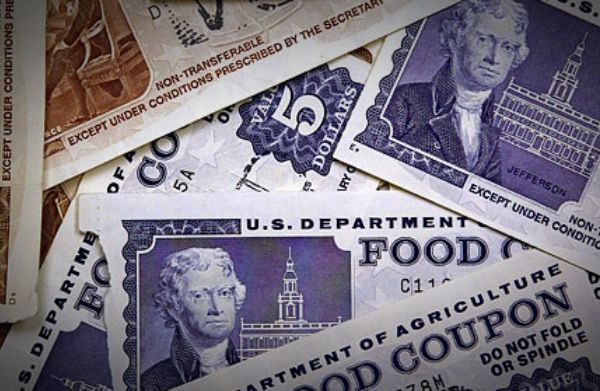Food stamp usage has been on the rise since President George W. Bush was in office, but shot up precipitously under President Barack Obama. This trend may be reversing itself, though it may be too early to tell.
New numbers from the Department of Agriculture indicate that the Supplemental Nutrition Assistance Program (SNAP or food stamps) may be shrinking. The number of individuals receiving SNAP dipped to below 45 million for the first time in five years. Some 44.7 million people were enrolled in SNAP in January of this year, a decrease of over 480,000 individuals from the previous month.
Reportedly, April 2011, was the last time we were under 45 million people. For 56 months straight about 15 percent of the population has been on public assistance. We’ve climbed as high as 47 million Americans in 2013. In January, the average Americans received through the program was $254.16. The overall price tag of the program is $5.6 billion.
It is important to put these numbers in historical context. Only about 2.8 million Americans were on food stamps when the program began in 1969. It tripled within the first decade and increased at a steady level of about 1 million people each year until declining in the late 1990s. Under President Obama, the program nearly doubled.
Federal officials are pleased to see the decline, according to the Washington Free Beacon:
“As the economy continues to improve, participation in the Supplemental Nutrition Assistance Program is declining,” said Kevin Concannon, under secretary for food, nutrition, and consumer services.
“SNAP is designed to be responsive to the economy, and this downward trend is an encouraging sign that the economic recovery is reaching struggling families, as is indicated by the longest streak of private sector job creation on record—73 straight months, 14.4 million new jobs, and unemployment about half of what it was six years ago,” he said. “USDA is focused on finding innovative, cost-effective strategies to help even more recipients find and keep gainful employment which enables them to support their
We’re pleased to see SNAP snap back to a smaller size, too, but they have a long way to go. At an incremental decline, it will take decades to get back to pre-recession and even pre-9/11 levels where only about 20-25 million Americans were receiving aid.
But even 20 million as a new normal raises a far bigger question to address. How effective are our poverty alleviation strategies if a tenth of the population needs food assistance. The goal with the 50-year old War on Poverty was to get all Americans out of poverty, but it has failed to eliminate poverty in our nation. Rather poverty has been enshrined it in our tax code and earned a permanent line item in our federal budget. We’re not working to see people completely independent, but rather creating a new source of income. We’re also not targeting those who truly need the help.
In a wealthy nation, success should not be measured by how many more people qualify as poor, but how many people are no longer poor. That’s a shift from focusing on inputs to outcomes.
Our social safety net should be about helping people going through a difficult moment until they can be independent (once again), not helping them gain dependency on government.


